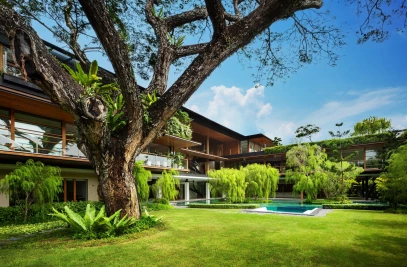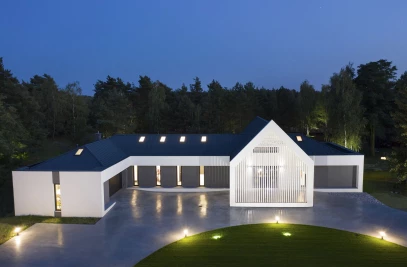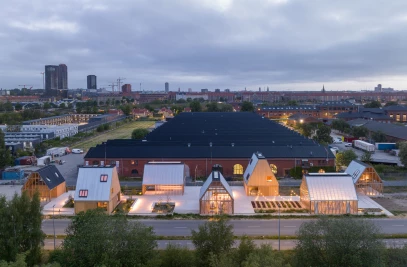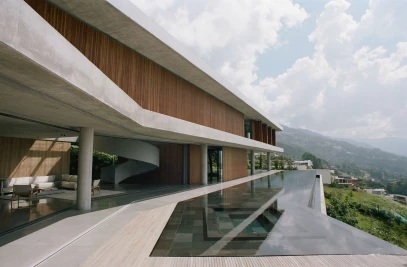Neutelings Riedijk Architects in collaboration with Bureau Bouwtechnik have restored and reimagined the monumental Gare Maritime on the Tour & Taxis site in Brussels’ Kanaalzone as a lively city quarter encompassing office, retail, dining and leisure functions.

Dating back to the early 1900s, the site has functioned as a hub of multi-modal freight transport platforms, incorporating water, rail, and road. Mixed-use facility and urban regeneration specialists Extensa commissioned the revitalization project, which involved two core phases. First, the existing 280m long x 140m wide building and its’ distinctive supporting structure of riveted lattice girders and three-hinge trusses was restored and updated, keeping the ‘skin’ of the building identifiable. In the second phase, twelve new building volumes were added under the existing building side aisles to accommodate 45,000 sq. m programme including office and retail spaces, event spaces, and public green spaces. Taken together, the original building and new pavilions combine a network of boulevards, streets, and public parks and squares into one ‘covered city’ reflective of the existing urban context.

Brussels is home to the European Union’s primary operational base and is considered by many to be the factual capital of the EU. With the recent launch of the European Green Deal, it was imperative that the Gare Maritime embody the sustainability ethos of the region and serve as model of sustainable design. Both the renovation project and the new volumes embedded cutting-edge sustainability principles across every aspect, from design to construction to materials to spatial considerations to utilizing the latest innovations in renewable energy technology.

The central space in the heart of the site is open for public events. On either side of this, wide greenwalking boulevards have been added to create Spanish-style ‘ramblas’. These pedestrian routes span a width of 16 metres, allowing room for over a hundred trees as well as 3,000 sq. m of garden space, creating both a green lung for the site and a climate buffer. Landscape architects OMGEVING designed a series of ten gardens based around four separate themes; flower, woodland, grass, and fragrance. Mosaics by visual artist Henri Jacobs are interspersed throughout the gardens.

The primary material used in the project is Cross Laminated Timber (CLT), a responsibly sourced wood. This material saved 3,500 tonnes of C02 emissions which would have been generated had concrete been used instead. The façade is finished in FSC certified oak. Wood, paving stones, and steel columns from the original building were re-used and retained where possible, saving costs and materials as well as integrating the site’s history into its future. Building-integrated photovoltaic cells (BIPV) covering 17,000 sq. m power the station, geothermal wells moderate heating and cooling functions, and rainwater is collected and recycled for plumbing and adiabatic cooling.

A circular design was used to maximise flexibility, using modular elements and demountable connections to allow pavilions to accommodate to a vast range of functions. Health of inhabitants was prioritized by creating light, open workspaces for the office programmes and using natural materials throughout the space. Sculptural oak staircases interconnect the pavilions yet each retains a unique address, lending a human scale to the project. All of these innovations make the Gare Maritime energy neutral and fossil free.

This vast mixed-use project combines working, shopping, and public space functions into one central hub as a reimagined city district, ‘a city where it never rains’, and has reinvigorated this important historic site in a model of sustainable urban renewal.


























